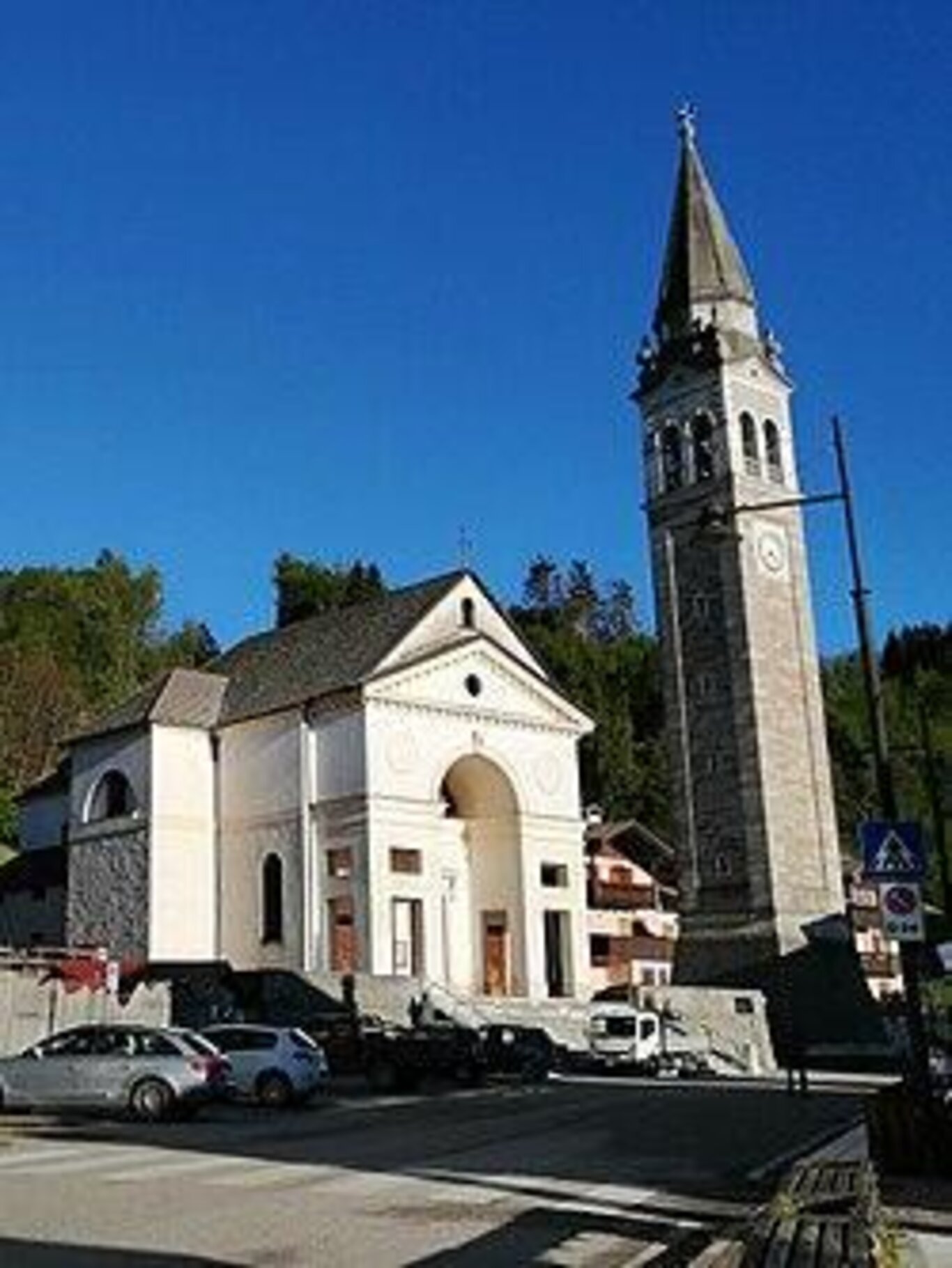Originally, the chapel of Tambre depended on the parish of Santa Maria del Rosario; it became independent on July 24, 1730, being established as an autonomous parish.
The new church was built in the first half of the 1800s and consecrated on June 10, 1845, dedicated to the proto-bishop of Aquileia, Saint Hermagoras, and his deacon, Saint Fortunatus, through whom Christianity was brought to the Alpago in the 1st century.
The gable façade of the church, facing west, features the main portal centrally with a lintel and smaller side portals, while above is a semicircular window set within a large full arch; the facade is crowned by a triangular pediment, above which the roof slopes with a steeper pitch.
Next to the parish church stands the bell tower on a high sloping base, featuring a square plan; the belfry has a bifora on each side and is topped by a pyramidal spire resting on an octagonal drum.
The interior of the building consists of a single nave, its walls lined with pilasters supporting the entablature, from which the vault is set; at the end of the nave, the presbytery develops, in turn closed by a flat back wall.
Here, several valuable works are preserved, the most important of which is the Via Crucis, probably created by Paolo de Filippi around the turn of the 18th to 19th century.
